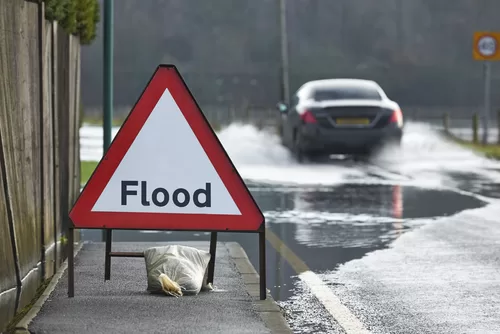Homeowners insurance is essential for protecting your property from a range of risks, including fire, theft, and natural disasters. However, many homeowners are unaware that standard homeowners insurance policies typically do not cover flood damage. With climate change leading to more severe weather events and flooding becoming more frequent, it’s important to consider whether adding flood insurance to your current policy is a wise choice.
What is Flood Insurance?
Flood insurance is a type of insurance policy that provides coverage for damage to your property caused by flooding. Flooding can occur due to heavy rain, rising water levels in rivers or lakes, or coastal storms. Unlike other types of insurance policies, flood insurance is typically not included in a standard homeowners insurance policy and must be purchased separately.
According to the National Flood Insurance Program (NFIP), the average cost of flood insurance in the United States is about $700 per year, but this can vary widely depending on the factors mentioned above. It’s important to note that flood insurance is typically not covered by a standard homeowners insurance policy, so it’s essential to purchase a separate policy if you live in a flood-prone area.
Benefits of Adding Flood Insurance to Your Homeowners Policy
There are several benefits to adding flood insurance to your homeowner’s policy, including:
- Protection against Flood Damage – Floods can cause significant damage to your home and property, including structural damage, mold growth, and water damage. With flood insurance, you can protect your investment and avoid the financial burden of repairing or rebuilding your home after a flood.
- Peace of Mind – Knowing that your home is protected from flooding can give you peace of mind and allow you to focus on other aspects of your life. You won’t have to worry about the financial impact of a flood or the stress of dealing with the aftermath.
- Affordable Coverage – While the cost of flood insurance can vary depending on the location and risk level of your property, it is often more affordable than other types of insurance policies. The NFIP offers affordable rates, and many homeowners may be eligible for discounts based on their property’s risk level.
- Required by Lenders – If you live in a high-risk flood zone, your mortgage lender may require you to purchase flood insurance. Even if you are not required to have flood insurance, it is still a good idea to consider adding it to your policy to protect your home and property.
- Covers More than Homeowners Insurance – Flood insurance policies typically cover more than just the structure of your home. They may also cover damage to your personal property, including furniture, electronics, and clothing.
Risks of Adding Flood Insurance to Your Homeowners Policy
While there are many benefits to adding flood insurance to your homeowner’s policy, there are also some risks to consider, including:
- Cost – Adding flood insurance to your policy can increase your insurance costs, which can be a significant expense for some homeowners. However, the cost of flood insurance is often much lower than the cost of repairing or rebuilding your home after a flood.
- Low Risk of Flooding – If you live in a low-risk flood zone, adding flood insurance to your homeowner’s policy may not be necessary. However, it’s important to remember that floods can occur in any area, and it’s better to be prepared than to face the financial burden of flood damage.
- Limited Coverage – Flood insurance policies typically have limits on coverage, which may not be enough to cover all of the damage caused by a flood. It’s important to review your policy carefully and consider purchasing additional coverage if needed.
- Waiting Period – If you are purchasing flood insurance for the first time or renewing your policy, there may be a waiting period before your coverage begins. This waiting period can range from 30 days to several months, depending on the policy.
The cost of flood insurance can vary depending on several factors, including the location of the property, the flood risk in the area, the coverage limits, and the deductible is chosen. Generally, if the property is located in a high-risk flood zone, the cost of flood insurance is likely to be higher than if the property is located in a low or moderate-risk flood zone.
Final Thoughts
Adding flood insurance to your current homeowner’s insurance policy can provide valuable protection against the financial impact of flood damage. To get an accurate estimate of the cost of flood insurance for your property, it’s best to speak with a licensed insurance agent who can provide you with a personalized quote based on your specific needs and circumstances.
The post Protect Your Home from Flood Damage with Flood Insurance: What You Need to Know appeared first on RealtyBizNews: Real Estate Marketing & Beyond.


